
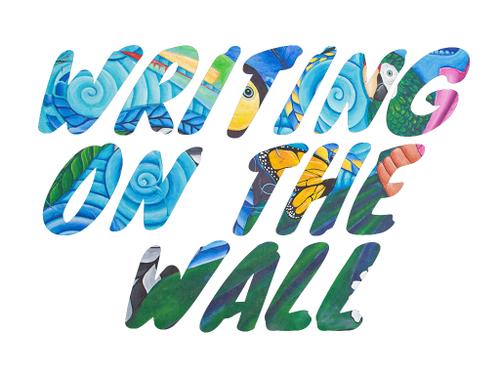
For more than a decade, all new murals painted on private property in the city of Los Angeles were illegal.
And then a year ago – with a simple vote from City Hall – they weren’t.
From 2002 until 2013, a signage moratorium that governed public advertisements left most murals in Los Angeles in a legal limbo.
The moratorium was enacted in response to the proliferation of large works on private property, which aimed to sell commercial products.
In 2003, Los Angeles moved to ban these advertisements, which were passing under the guise of art, but complaints by sign companies led the city to simply ban all signage on city walls, which included murals.
The controversy came down to a single paragraph in the city code that classified murals as equivalent to advertisements and billboards, banning them all, full stop.

Artists across the city mainly ignored the moratorium, preferring to keep the politics out of their painting. It was only after completed, older murals came under attack from whitewashers that muralists began to band together to fight the law.
“It was the first time I really saw the Los Angeles muralists and public art community come together like that,” said artist Kristy Sandoval.
In order to get around the limiting regulation, artists often used loopholes in the language of the moratorium, doing things like painting on schools, which often had protected status as city property.
In 2011, as a result of the whitewashing outcry, the Los Angeles City Council commissioned a Mural Working Group that consisted of artists, gallery owners and the Mural Conservancy of Los Angeles to help develop a new ordinance to govern murals in the city.
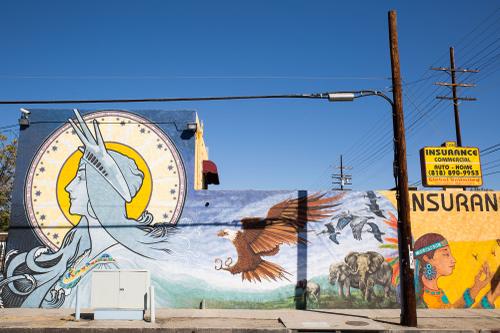
Dozens of meetings between stakeholders were held to determine exactly how to split the city’s definition between an original art mural and a public advertisement.
Even with overwhelming support from the public art community and city councilmembers, the creation of the committee was only the beginning of a months-long process to push the ordinance through city bureaucracy.
On Aug. 28, 2013, with a vote of 13-2, a new ordinance governing the state of murals in the City of Los Angeles was approved.
At the forefront of the charge for the mural ordinance was Isabel Rojas-Williams, executive director of the Mural Conservancy of Los Angeles. For her, the right to public art is particularly personal. She left her home in Chile during the 1970s to escape persecution, and possible execution, for painting political slogans on public walls.
The current mural ordinance contains two distinctions that classify the type of murals depending on when they were painted.
Murals painted before the advent of the 2013 mural ordinance were grandfathered in and given official status. Iconic pieces, such as the Victor Clothing Company's murals in the historic area of downtown or "Cream of the Crop" in the Arts District, are now supposed to be legally sanctioned.
Murals painted after the passage of the ordinance would be eligible for a permit that would give the artwork protected status for at least two years.
While these newly installed pieces are subject to a variety of rules and restrictions, some artists are arguing that the updated system limits their freedom of expression.

An email from Felicia Filer, the L.A. Department of Cultural Affairs Public Art Division director, said the response to the permitting system has been varied, but some artists have found it easy.
Yet Sandoval, who painted the first mural to receive official permitting under the new rules by the city’s Department of Cultural Affairs, disagrees.
She said she thinks her piece, “Keep Pacoima Beautiful,” which is situated on the corner of Glenoaks and Van Nuys boulevards in Pacoima, was a mess of bureaucratic entanglements.
Currently, in order to obtain an official mural permit from the city, applicants must complete the following process.
First, an artist with a mural idea contacts the Department of Cultural Affairs to get the mural registration materials.
After receiving the materials, the permit applicant is required to set up a community meeting to communicate to the larger community the significance of the mural.
Once the community meeting has been held and approval by the building owner and the local neighborhood council is received, the permit applicant sends in the registration materials along with a $60 fee.
If the department approves the mural, the artist is then given the go-ahead to paint or install the artwork, after which they submit more documents for a final review by the Department of Cultural Affairs.

Simply listing all the steps, however, doesn’t really reveal the time and financial cost of the process, Sandoval said.
For example, the $60 permitting fee doesn’t reveal the $40 filing fee with the city and the cost of installing the required anti-graffiti coating.
Sandoval said she paid out of pocket for all costs associated with “Keep Pacoima Beautiful,” including hundreds of dollars to install anti-graffiti coating on the work.
She added that applying for a permit also takes a large amount of time – she said she thinks multiple visits to government agencies can be a bureaucratic nightmare, and logistical elements, like finding a building’s ultimate property owner, can be challenging and stressful.
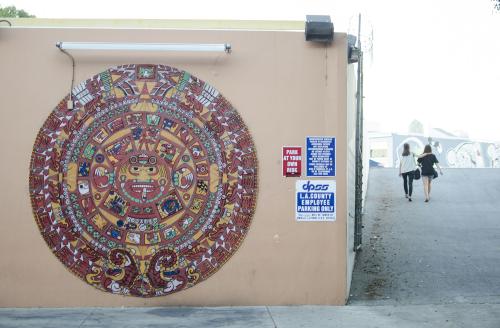
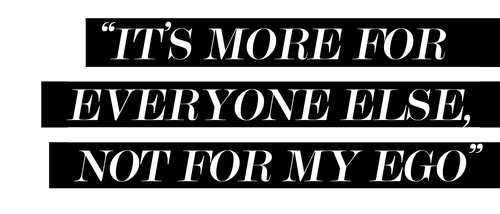
However, Sandoval said that despite the permitting headache, she still sees the importance of guaranteeing her mural’s protection.
“It’s more for everyone else, not for my ego,” she said. “It’s important to register the murals because I want to make sure that it has a lasting impact on the community.”
Still, Sandoval admits that the hassle of applying for a permit has probably dissuaded some artists from trying to protect their work.
In the year since the passage of the new mural ordinance, fewer than 50 mural applications have been received. Of that number, only a handful have been officially registered, according to numbers obtained from the Department of Cultural Affairs.
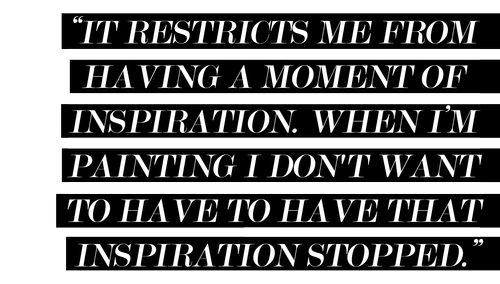
Besides the long process for getting the mural registered, another criticism of the ordinance is that it hampers the creative freedom of the artist.
Sandoval said because the process involves getting the design approved in advance by city officials, it stops her from making any last-minute changes while painting the work.
“It restricts me from having a moment of inspiration,” Sandoval said. “When I’m painting, I don't want to have to have that inspiration stopped.”
In the year since the passage of the original ordinance, the city has also made some changes to the law that pertain to protecting installed murals and opening up the number of walls available for artists.
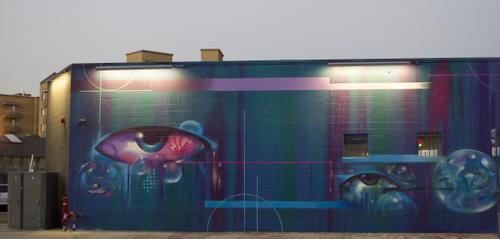
An amendment to the mural ordinance brought forward in May aimed to address the fact that many property owners are unfamiliar with the bureaucratic process.
Previous to the May amendment, some property owners were hit with notices of noncompliance, even if the murals on their property were going through the application process. As a result, the fear of the thousands of dollars in fines that could be levied led to the whitewashing of ostensibly protected works by the property owners.
The amendment attempted to fix this unnecessary action by giving property owners the proper information regarding the notices and how to move forward legally.
The ordinance has also provided an option for some councilmembers to opt into allowing murals on single-family homes in their district.
Critics’ main arguments for overturning the mural moratorium were twofold. One, a new ordinance was needed to protect the city’s artistic history, and two, any observer would be able to tell the difference between a sign and a mural.
With a history going back more than half a century, murals in Los Angeles are well-integrated into the city’s cultural landscape. Recent events, however, have shown the distinction between artwork and advertising may be less obvious than originally anticipated.
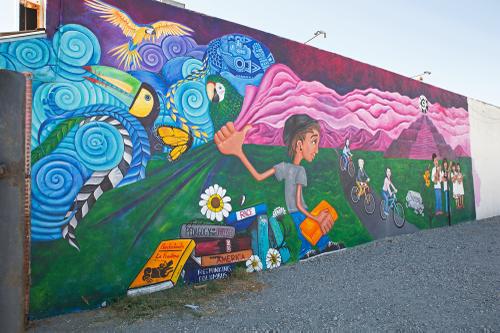
With a good dose of human drama, the most publicized of these conflicts involves a controversial public art figure, an indie rock band and the mayor of Los Angeles.
The battleground for the summer’s biggest conflict over public art now lays bare. A plain white wall overlooks a nondescript lot in downtown that housed hundreds of screaming, selfie-taking fans just a few months ago.
A massive mural for the band Foster the People on the side of the Santa Fe Lofts was painted in January in advance of the release of the band’s album, “Supernatural.”
The mural featured artwork from the album’s cover and measured 125 feet high. The process for painting the mural had been used in a music video for the album track, “Coming of Age.”
Foster the People announced that the city was going to paint over the mural in July, citing improper permitting and the definition in the mural ordinance that prohibits advertisements as part of the mural.
The band appealed to its fans for help, and a social media campaign to save the mural began. Dozens of comments flooded L.A. Mayor Eric Garcetti’s Instagram account, and an online petition garnered more than 12,000 signatures.
“Don’t call it a mural – it’s a sign,” said Rojas-Williams. “The vast majority of these people were fans of the band. They had no idea between the difference of the sign and a legitimate work of art.”
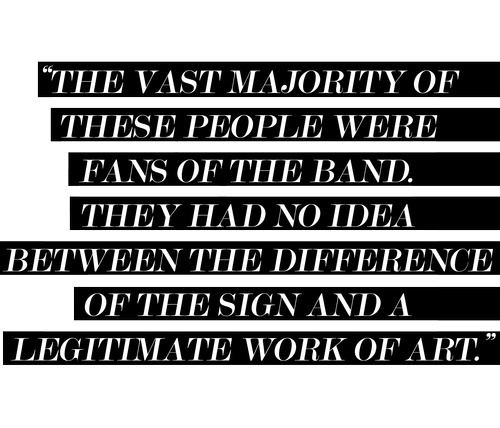
Spurred on by the attention, Garcetti came in and contacted the building owner and mediated a temporary stay for the mural. During this cooling-off period, the band hosted a celebration at the site of the mural, giving out free posters and merchandise to fans.
The reprieve was short-lived.
In August, Garcetti released a joint statement with the band and the building owner informing the public that the work was to be painted over.
Mere weeks after the announcement that the mural was saved, the entire side of the building was whitewashed.
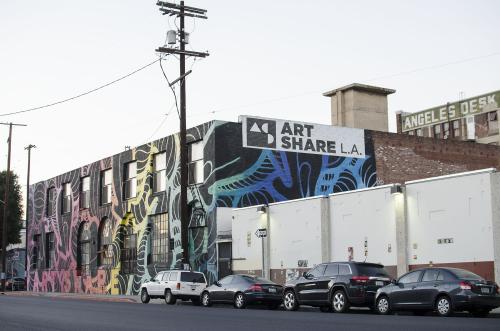
Daniel Lahoda, founder of the L.A. Freewalls Project, an organization which aims to connect muralists with willing property owners, organized and helped to paint the mural, which was one of the largest in California.
The city said the mural violated the structure’s status as a historic building, but Lahoda contends that it was simply a way to limit artists’ freedom of expression.
“It was really kind of backhanded, the way the city did it,” Lahoda said. “They wanted to create this narrative that we were putting this big billboard up to try and bamboozle the community.”
East Los Angeles-based artist Sonia Romero, who often works with governments and corporations to install murals, said it's up to artists to uphold their own ethical principles.
“I think it's okay to have the sponsorship of a large company, but it's up to an artist to negotiate to have the freedom of expression,” Romero said.
While Lahoda remains a divisive figure in the L.A. public and street art community, he had some choice words for the Mural Conservancy of Los Angeles and the way the mural ordinance was being administered.
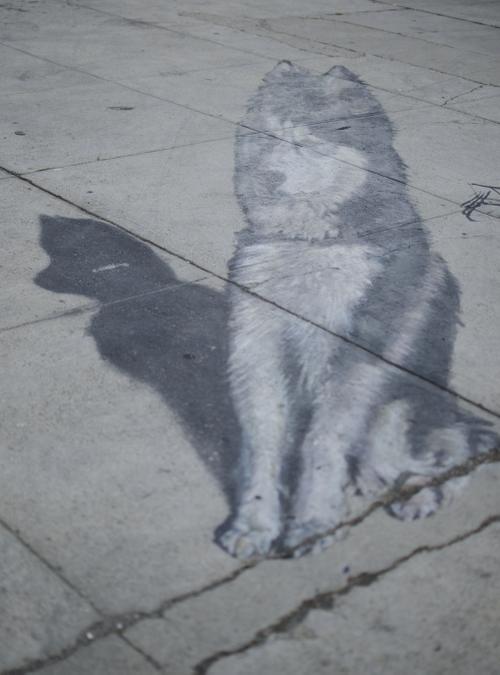
He labeled the Mural Conservancy of Los Angeles and artists like Romero and Sandoval as compliant to the bureaucratic system, which he views as opposing the counter-cultural mission of murals themselves.
“When it comes to getting art on the wall, there’s a certain amount of preferential treatment, depending on how compliant the artist may or may not be,” Lahoda said.
Lahoda, who in his capacity as a founder of the L.A. Freewalls Project was part of the Mural Working Group, said his organization pioneered many of the steps now used for official permitting, including holding community meetings.
Although he said the mural ordinance was important in overturning the moratorium, Lahoda said he thinks the way the ordinance is being administered – which drives up cost and time commitments for artists – is actually deterring muralists from protecting their own art.
“Until the law reflects the spirit of the community and the spirit of the ordinance and the spirit of the art as a tool for social change, we’ll continue to butt heads,” Lahoda said. “We’re not anti-ordinance, we’re anti-fascism.”
Ironically, some of the first murals came to Los Angeles in partnership with the government – the Works Project Administration, a New Deal project, paid for murals to go up in and around government property as a way of offering jobs to artists in the opportunity-starved Great Depression.
In the year since the passage of the mural ordinance and the overturning of the moratorium, public spectacle and political grandstanding has often overshadowed the original intention of the art.
But even while conflict rages over the role of regulation in public art, a singular sentiment can be heard over the din of debate – the belief that murals act as catalysts for social change.
“A mural is a mirror,” Rojas-Williams said. “Murals are abrasive precisely because they speak to all the issues that affect us in society. They add a voice to the voiceless on the walls of Los Angeles.”